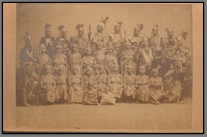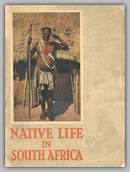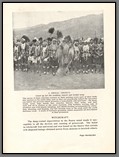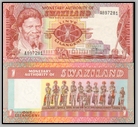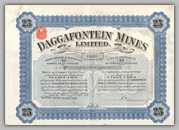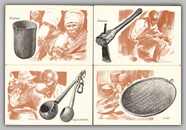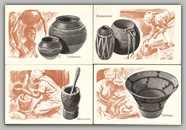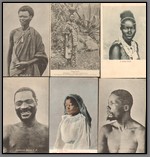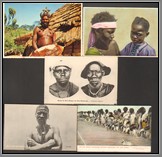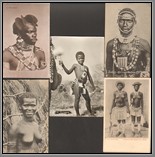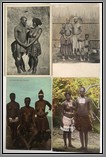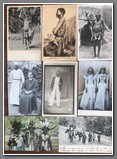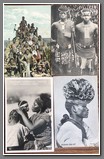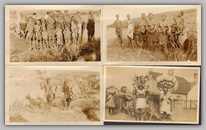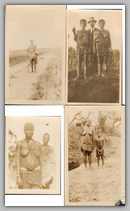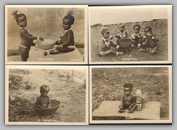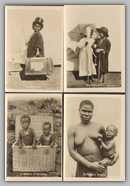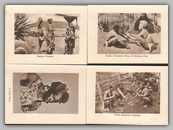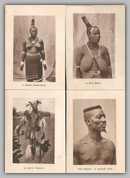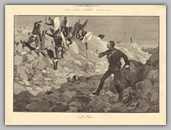 SA 031Napoléon, Prince Imperial (full name: Napoléon Eugène Louis Jean Joseph Bonaparte, prince impérial de France; 16 March 1856 – 1 June 1879) was the only child of Emperor Napoleon III of France and his Empress consort Eugénie de Montijo. After his father was dethroned in 1870, he relocated with his family to England. On his father's death in January 1873, he was proclaimed Napoleon IV, Emperor of the French by the Bonapartist faction.
SA 031Napoléon, Prince Imperial (full name: Napoléon Eugène Louis Jean Joseph Bonaparte, prince impérial de France; 16 March 1856 – 1 June 1879) was the only child of Emperor Napoleon III of France and his Empress consort Eugénie de Montijo. After his father was dethroned in 1870, he relocated with his family to England. On his father's death in January 1873, he was proclaimed Napoleon IV, Emperor of the French by the Bonapartist faction.
In England he trained as a soldier. With the outbreak of the Zulu War in 1879, the Prince Imperial, with the rank of lieutenant, forced the hand of the British military to allow him to take part in the conflict, despite the objections of Rouher and other Bonapartists. He was only allowed to go to Africa by special pleading of his mother, the Empress Eugénie, 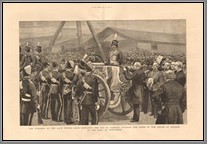 SA 031and by intervention of Queen Victoria herself. He went as an observer, attached to the staff of Frederic Thesiger, 2nd Baron Chelmsford, the commander in South Africa, who was admonished to take care of him. Louis accompanied Chelmsford on his march into Zululand. Keen to see action, and full of enthusiasm, he was warned by Lieutenant Arthur Brigge, a close friend, "not to do anything rash and to avoid running unnecessary risks. I reminded him of the Empress at home and his party in France."
SA 031and by intervention of Queen Victoria herself. He went as an observer, attached to the staff of Frederic Thesiger, 2nd Baron Chelmsford, the commander in South Africa, who was admonished to take care of him. Louis accompanied Chelmsford on his march into Zululand. Keen to see action, and full of enthusiasm, he was warned by Lieutenant Arthur Brigge, a close friend, "not to do anything rash and to avoid running unnecessary risks. I reminded him of the Empress at home and his party in France."
Chelmsford, mindful of his duty, attached the Prince to staff of Colonel Richard Harrison of the Royal Engineers, where it was felt he could be active but safe. Harrison was responsible for the column's transport and for reconnaissance of the forward route on the way to Ulundi, the Zulu capital. While he welcomed the presence of Louis, he was told by Chelmsford that the Prince must be accompanied at all times by a strong escort. Lieutenant Jahleel Brenton Carey, a French speaker and British subject from Guernsey, was given particular charge of Louis. The Prince took part in several reconnaissance missions, though his eagerness for action almost led him into an early ambush, when he exceeded orders in a party led by Colonel Redvers Buller. Despite this on the evening of 31 May 1879, Harrison agreed to allow Louis to scout in a forward party scheduled to leave in the morning, in the mistaken belief that the path ahead was free of Zulu skirmishers.
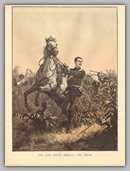 SA 031On the morning of 1 June, the troop set out, earlier than intended, and without the full escort, largely owing to Louis's impatience. Led by Carey, the scouts rode deeper into Zululand. Without Harrison or Buller present to restrain him, the Prince took command from Carey, even though the latter had seniority. At noon the troop was halted at a temporarily deserted kraal while Louis and Carey made some sketches of the terrain, and used part of the thatch to make a fire. No lookout was posted. As they were preparing to leave, about 40 Zulus fired upon them and rushed toward them screaming. The Prince's horse dashed off before he could mount, the Prince clinging to a holster on the saddle—after about a hundred yards a strap broke, and the Prince fell beneath his horse and his right arm was trampled. He leapt up, drawing his revolver with his left hand, and started to run—but the Zulus could run faster.
SA 031On the morning of 1 June, the troop set out, earlier than intended, and without the full escort, largely owing to Louis's impatience. Led by Carey, the scouts rode deeper into Zululand. Without Harrison or Buller present to restrain him, the Prince took command from Carey, even though the latter had seniority. At noon the troop was halted at a temporarily deserted kraal while Louis and Carey made some sketches of the terrain, and used part of the thatch to make a fire. No lookout was posted. As they were preparing to leave, about 40 Zulus fired upon them and rushed toward them screaming. The Prince's horse dashed off before he could mount, the Prince clinging to a holster on the saddle—after about a hundred yards a strap broke, and the Prince fell beneath his horse and his right arm was trampled. He leapt up, drawing his revolver with his left hand, and started to run—but the Zulus could run faster.
The Prince was speared in the thigh but pulled the assegai from his wound. As he turned and fired on his pursuers, another assegai, thrown by a Zulu named Zabanga, struck his left shoulder. The Prince tried to fight on, using the assegai he had pulled from his leg, but, weakened by his wounds, he sank to the ground and was overwhelmed. When recovered, his body had eighteen assegai wounds; one stabbing had burst his right eye and penetrated his brain. Two of his escort were killed and another was missing. Lt. Carey and the four men remaining came together about fifty yards from where the Prince made his final stand — but did not fire at the Zulus. Carey led his men back to camp, where he was greeted warmly for the last time in his career: after a court of inquiry, a court martial, intervention by the Empress Eugénie and Queen Victoria, he was to return to his regiment a pariah, shunned by his fellow officers for not standing and fighting. Carey endured several years of social and regimental opprobrium before his death in Bombay, India, on 22 February 1883.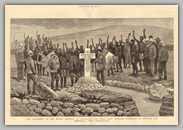 SA 031
SA 031
Louis Napoleon's death caused an international sensation. Rumours spread in France that the prince had been intentionally "disposed of" by the British. Alternatively, the French republicans or the Freemasons were blamed. In one account, Queen Victoria was accused of arranging the whole thing, a theory that was later dramatised by Maurice Rostand in his play Napoleon IV. The Zulus later claimed that they would not have killed him if they had known who he was. Langalabalele, his chief assailant, met his death in July at the Battle of Ulundi. Eugénie was later to make a pilgrimage to Sobuza's kraal, where her son had died. The Prince, who had begged to be allowed to go to war (taking the sword carried by the first Napoleon at Austerlitz with him) and who had worried his commanders by his dash and daring, was described by Garnet Wolseley as "a plucky young man, and he died a soldier's death. What on earth could he have done better?"[ His badly decomposed body was brought back to Woolwich Arsenal, on board the British troopship HMS Orontes; and overnight he lay in state in the western octagonal guardhouse by the riverfront. The funeral procession, including Queen Victoria, went from there to Chislehurst where he was buried. On 9 January 1888, his body was transferred to a special mausoleum constructed by his mother as the Imperial Crypt at Saint Michael's Abbey, Farnborough, Hampshire, England, next to his father. The Prince Imperial had appointed Prince Napoléon Victor Bonaparte his heir, thus skipping the genealogically senior heir, Victor's father, Prince Napoléon.
His early death sent shockwaves throughout Europe, as he was the last serious dynastic hope for the restoration of the Bonapartes to the throne of France. B
Price: $450.00

